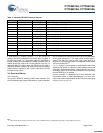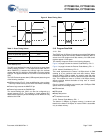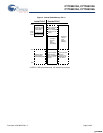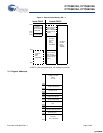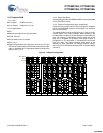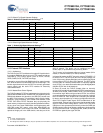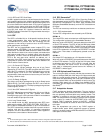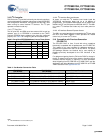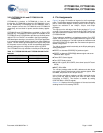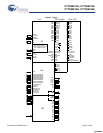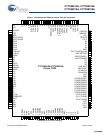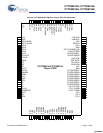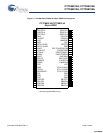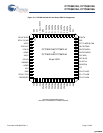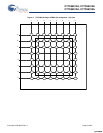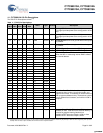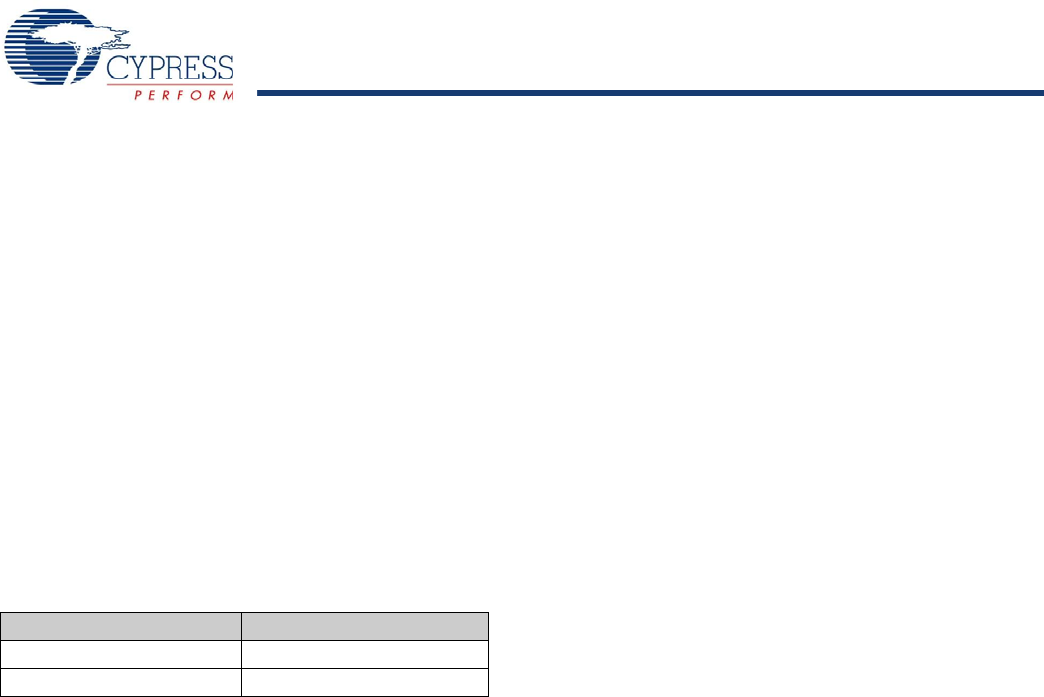
CY7C68013A, CY7C68014A
CY7C68015A, CY7C68016A
Document #: 38-08032 Rev. *L Page 14 of 62
3.20 CY7C68013A/14A and CY7C68015A/16A
Differences
CY7C68013A is identical to CY7C68014A in form, fit, and
functionality. CY7C68015A is identical to CY7C68016A in form,
fit, and functionality. CY7C68014A and CY7C68016A have a
lower suspend current than CY7C68013A and CY7C68015A
respectively and are ideal for power sensitive battery applica-
tions.
CY7C68015A and CY7C68016A are available in 56-pin QFN
package only. Two additional GPIO signals are available on the
CY7C68015A and CY7C68016A to provide more flexibility when
neither IFCLK or CLKOUT are needed in the 56-pin package.
USB developers wanting to convert their FX2 56-pin application
to a bus-powered system directly benefit from these additional
signals. The two GPIOs give developers the signals they need
for the power control circuitry of their bus-powered application
without pushing them to a high pincount version of FX2LP.
The CY7C68015A is only available in the 56-pin QFN package
4. Pin Assignments
Figure 6 on page 15 identifies all signals for the five package
types. The following pages illustrate the individual pin diagrams,
plus a combination diagram showing which of the full set of
signals are available in the 128-pin, 100-pin, and 56-pin
packages.
The signals on the left edge of the 56-pin package in Figure 6
on page 15 are common to all versions in the FX2LP family with
the noted differences between the CY7C68013A/14A and the
CY7C68015A/16A.
Three modes are available in all package versions: Port, GPIF
master, and Slave FIFO. These modes define the signals on the
right edge of the diagram. The 8051 selects the interface mode
using the IFCONFIG[1:0] register bits. Port mode is the power on
default configuration.
The 100-pin package adds functionality to the 56-pin package by
adding these pins:
■ PORTC or alternate GPIFADR[7:0] address signals
■ PORTE or alternate GPIFADR[8] address signal and seven
additional 8051 signals
■ Three GPIF Control signals
■ Four GPIF Ready signals
■ Nine 8051 signals (two USARTs, three timer inputs, INT4,and
INT5#)
■ BKPT, RD#, WR#.
The 128-pin package adds the 8051 address and data buses
plus control signals. Note that two of the required signals, RD#
and WR#, are present in the 100-pin version.
In the 100-pin and 128-pin versions, an 8051 control bit can be
set to pulse the RD# and WR# pins when the 8051 reads
from/writes to PORTC. This feature is enabled by setting
PORTCSTB bit in CPUCS register.
Section 10.5 displays the timing diagram of the read and write
strobing function on accessing PORTC.
Table 10. CY7C68013A/14A and CY7C68015A/16A Pin Dif-
ferences
CY7C68013A/CY7C68014A CY7C68015A/CY7C68016A
IFCLK PE0
CLKOUT PE1
[+] Feedback [+] Feedback



